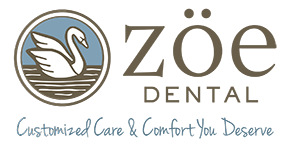Q&A: Some Surprising Facts About Gum Disease
Q. I’ve heard that cavities are the main cause of tooth loss in American adults. Did I hear right?
A. Actually, in adults older than 35, more teeth are lost to periodontal (gum) disease than to cavities, according to the American Academy of Periodontology. Regular brushing and flossing, along with routine visits to your dentist, can go a long way toward preventing both gum disease and cavities. A report published in 2007 by the Centers for Disease Control and Prevention showed that more Americans these days are keeping their natural teeth.
Q. Can I catch periodontal disease from other people?
A. Most people probably don’t realize it, but periodontal diseases are fostered by specific bacteria that we acquire from other people. However, research shows that you probably need to be susceptible in addition to being exposed to the bacteria.
Periodontal disease is sometimes passed from one family member to another. A 1997 article in the Journal of the American Dental Association states that the bacteria that cause periodontal diseases can be passed from person to person through saliva. Because of this, the American Academy of Periodontology recognizes that treating patients can sometimes involve treating several members of a family.
Q. Can healthy eating help my periodontal health, too?
A. Yes, a healthy diet can affect your oral health as well as your overall health. For example, a study published in the January 2008 Journal of Periodontology showed that routinely eating dairy products, such as yogurt, might lower the risk of gum disease. According to the study, people who consumed 55 grams (a bit less than 4 tablespoons) or more of lactic-acid foods each day were found to be healthier when evaluated for two indicators of periodontal disease. Fermented milk products such as yogurt contain lactic acid.
Q. If my parents had periodontal disease, am I more likely to have it?
A. Genetics is a risk factor for periodontal diseases. According to research, as many as 30 percent of people may be at risk genetically for gum disease. Even if these people take good care of their teeth and gums, they may be up to six times more likely to have periodontal diseases. Taking preventive steps, including routine oral care and preventive periodontal therapy, provides the best chance for good oral health.
“Can One Acquire Periodontal Bacteria and Periodontitis from a Family Member?” S. Asikainen et al, Journal of the American Dental Association, September 1997, vol. 128, no. 9, pp. 1263-71. Abstract: http://www.ncbi.nlm.nih.gov/pubmed/9297948. Accessed 2013.
“Dispelling Myths About Gum Disease: The Truth Behind Healthy Teeth and Gums.” American Academy of Periodontology, February 6, 2009. http://www.perio.org/consumer/gum-disease-myths. Accessed 2013.
“Intake of Dairy Products and Periodontal Disease: The Hisayama Study.” Yoshihiro Shimazaki et al, Journal of Periodontology, January 2008, vol. 79, no. 1, pp. 131-137. Abstract: http://www.joponline.org/doi/abs/10.1902/jop.2008.070202. Accessed 2013.
“The Interleukin-1 Genotype as a Severity Factor in Adult Periodontal Disease.” K.S. Kornman et al, Journal of Clinical Periodontology, January 1997, vol. 24, no. 1, pp. 72-7. Abstract: http://onlinelibrary.wiley.com/doi/10.1111/j.1600-051X.1997.tb01187.x/abstract. Accessed 2013.
“Trends in Oral Health Status: United States, 1988-1994 and 1999-2004.” Centers for Disease Control and Prevention, April 2007. http://www.cdc.gov/nchs/data/series/sr_11/sr11_248.pdf. Accessed 2013.
Author: Jeffrey Bramnick
– read more at: http://oralhealth.deltadental.com/22,DD110
